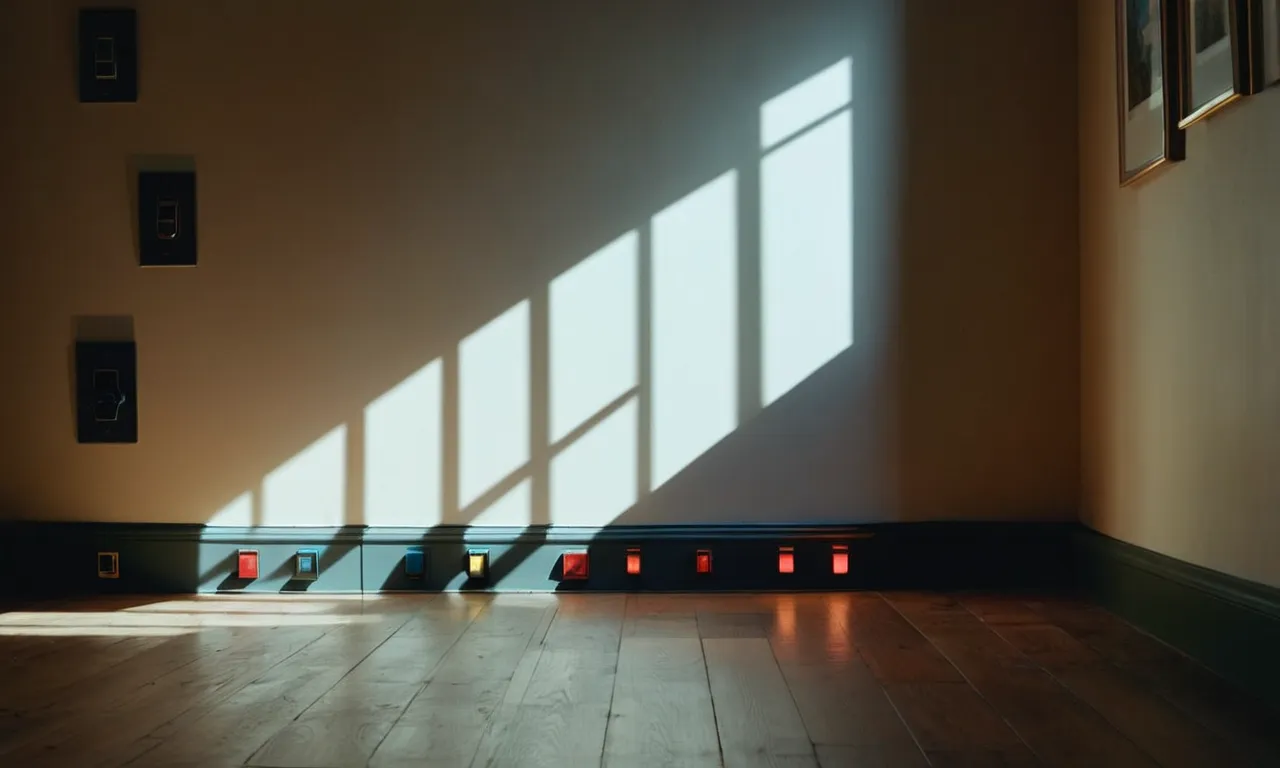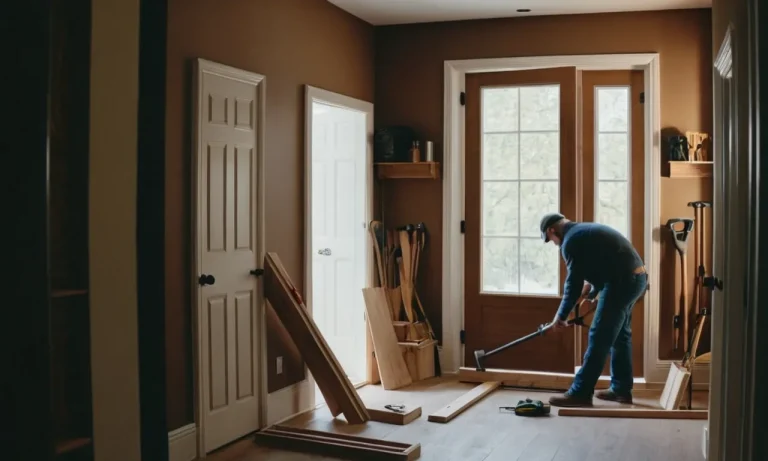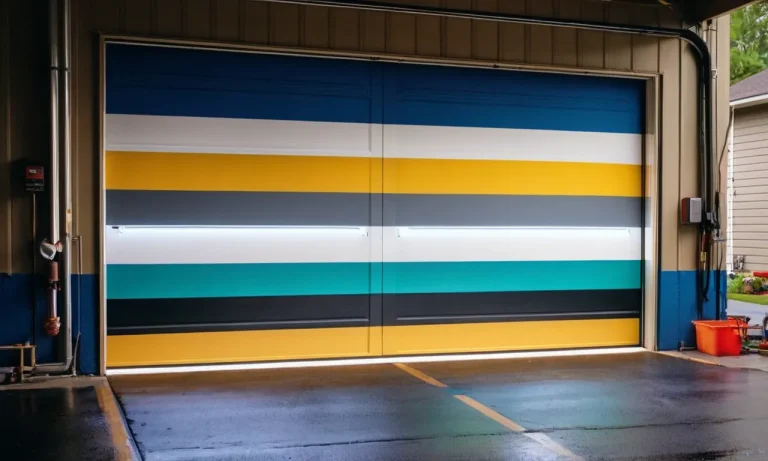The Ideal Height For Light Switches: A Complete Guide
Installing light switches at the perfect height is crucial for accessibility and convenience. But with varying recommended heights, how do you choose what’s right for your home? This comprehensive guide has the answers.
If you’re short on time, here’s a quick answer: most experts recommend installing light switches at 48 inches high for average-height adults. This makes them easy to reach for people of all mobility levels.
Light Switch Height Recommendations
When it comes to light switch height, there are several factors to consider, such as accessibility, safety, and user convenience. In this guide, we will explore the recommended heights for light switches in different scenarios.
Standard Switch Height
The standard height for light switches in most homes is around 48 inches from the floor. This height is considered optimal for the average adult, allowing for easy reach and operation without bending or stretching.
It is also a convenient height for most individuals, including those with average height and mobility.
ADA Compliant Height
The Americans with Disabilities Act (ADA) sets guidelines for accessibility and inclusion in public spaces. According to ADA standards, light switches should be mounted at a height between 15 inches and 48 inches from the floor.
This range ensures that individuals with disabilities, including those in wheelchairs, can easily reach and operate light switches. Additionally, the switches should be placed no more than 48 inches away from the point of entry into a room.
Height for Elderly or Disabled
For elderly or disabled individuals, it is recommended to install light switches at a height that is comfortable and accessible for them. This may vary depending on the individual’s specific needs and mobility limitations.
Some experts suggest installing light switches at a lower height, around 36 inches from the floor, to accommodate wheelchair users or individuals with limited upper body mobility. However, it is important to consider each person’s unique requirements and consult with them or their caregivers for the most suitable height.
Height for Children
When it comes to children, it is essential to make light switches accessible to them as well. A recommended height for children’s light switches is around 36 inches from the floor. This height allows children to reach and operate the switches on their own, promoting independence and safety.
However, it is important to childproof the switches to prevent accidental toggling or access to electrical outlets.
Other Height Considerations
In addition to the standard recommendations mentioned above, there are other factors to consider when determining the ideal height for light switches. These include the specific needs of the household members, the type and design of the switch, and the overall layout of the space.
For example, in rooms with high ceilings, it may be more convenient to install switches slightly higher to maintain aesthetic appeal. Additionally, some individuals may prefer switches at a lower height due to personal preferences or physical limitations.
Remember, these are general recommendations, and it is always best to consider the specific needs and preferences of the individuals using the switches. Consulting with an electrician or accessibility expert can provide valuable insights and ensure that the light switches are installed at the most suitable height for everyone in the household.
How to Choose the Right Height
Consider Who Will Use the Switches Most
When determining the ideal height for light switches, it is important to consider who will be using them most frequently. For example, if you have children in your home, it might be advisable to install the switches at a lower height so that they can easily reach and operate them.
On the other hand, if the switches are primarily used by adults, a higher placement might be more convenient. Ultimately, the goal is to find a height that is comfortable and easily accessible for the majority of users.
Account for Mounting Options Like Backplates
Another factor to consider when choosing the height for your light switches is the type of mounting option you plan to use, such as backplates. Backplates are decorative covers that can be installed behind the switches, adding a stylish touch to your walls.
Keep in mind that backplates can add some height to the switches, so it is important to account for this when determining the overall placement. Measure the height of the backplates and factor that in when deciding on the ideal height for your switches.
Test Different Heights Before Installing
Before permanently installing your light switches, it is a good idea to test different heights to find the one that feels most comfortable and convenient. You can do this by temporarily placing the switches at different heights using tape or other temporary mounting options.
This will allow you to physically interact with the switches at various heights and determine which one feels the most natural. Remember to consider factors such as ease of reach and visibility when testing out different heights.
Follow Electrical Code Requirements
It is important to note that there may be specific electrical code requirements in your area regarding the placement of light switches. These codes are in place to ensure safety and functionality. It is essential to familiarize yourself with these regulations and follow them accordingly.
Consulting with a licensed electrician or researching the electrical code requirements for your region can help you determine the appropriate height for your light switches while adhering to the necessary guidelines.
How to Install Switches at the Proper Height
Installing light switches at the proper height is essential for ensuring convenience and accessibility in your home. Whether you are renovating your space or installing new switches, following these steps will help you achieve the ideal height for your light switches.
Use a Laser Level or Tape Measure
The first step in installing switches at the proper height is to use a laser level or tape measure to determine the desired height. The standard height for light switches is around 48 inches from the floor. However, it’s important to consider the needs of the individuals using the switches.
For example, if you have children or individuals with mobility issues in your home, you may want to adjust the height accordingly.
Mark the Wall and Cut the Hole
Once you have determined the desired height, mark the wall using a pencil or marker. Ensure that the switch is at a comfortable height and easily accessible. Next, use a utility knife or drywall saw to cut a hole in the wall where the switch will be installed.
Be cautious and follow safety guidelines to avoid any accidents or damage to the wall.
Anchor the Electrical Box
After cutting the hole, anchor the electrical box securely in place. This will ensure that the switch is stable and does not move or become loose over time. It is important to consult with a licensed electrician or follow local building codes to ensure the electrical box is installed correctly for safety reasons.
Install the Switch and Wallplate
Finally, install the switch and wallplate. Connect the wires to the switch according to the manufacturer’s instructions, making sure to follow proper wiring techniques. Once the switch is securely connected, attach the wallplate to complete the installation.
Make sure the switch operates smoothly, and double-check that it is at the desired height.
By following these steps, you can ensure that your light switches are installed at the ideal height for maximum convenience and accessibility. Remember, safety should always be a top priority when working with electrical installations.
If you are unsure or uncomfortable with any step of the process, it is best to consult a professional electrician.
Mistakes to Avoid
Installing Too High or Low
One of the most common mistakes when installing light switches is placing them at an incorrect height. Installing switches too high or too low can be inconvenient and uncomfortable for users. It is important to find the ideal height that allows for easy reach without straining or bending too much.
According to ADA (Americans with Disabilities Act) guidelines, the recommended height for light switches is between 36 to 48 inches from the floor. This range ensures accessibility for people of different heights and abilities.
Not Accounting for Flooring
When installing light switches, it is crucial to consider the type of flooring in the room. If you have thick carpets or rugs, the switch might be difficult to reach if it is placed too low. On the other hand, if you have high flooring like tiles or hardwood, a switch placed too high may be inconvenient.
It is recommended to adjust the switch height accordingly, taking into account the thickness of the flooring material to ensure ease of use for everyone.
Forgetting Accessibility Needs
Accessibility is an essential consideration when installing light switches. Not accounting for the needs of individuals with disabilities or mobility issues can lead to inconvenience and discomfort. It is important to install switches at a height that can be easily reached by individuals who are using wheelchairs or have limited mobility.
Additionally, incorporating features such as large buttons or tactile indicators can also enhance accessibility for those with visual impairments.
Ignoring Electrical Codes
When installing light switches, it is crucial to follow electrical codes and regulations to ensure safety and compliance. Each municipality or jurisdiction may have specific requirements regarding the height and placement of switches.
Ignoring these codes can lead to potential hazards and legal issues. It is recommended to consult local electrical codes or hire a licensed electrician to ensure that the light switches are installed correctly, meeting all necessary regulations.
Light Switch Height Tips
Add Backplates for Easier Access
When it comes to light switch height, one of the first tips to consider is adding backplates for easier access. Backplates are small covers that can be installed behind the light switches. They not only add a decorative touch to your walls but also make it easier to locate and operate the switches.
By adding backplates, you can ensure that the switches are at a comfortable height for everyone in your household.
Use Rocker or Touch Light Switches
Rocker or touch light switches are another great option to consider when determining the ideal height for light switches. These types of switches have a larger surface area and are easier to operate with just a gentle touch or push.
They are especially beneficial for individuals with limited mobility or dexterity. By using rocker or touch light switches, you can create a more accessible and user-friendly environment in your home.
Install Dimmers at Comfortable Heights
Dimmer switches are a popular choice for controlling the brightness of your lights. When installing dimmer switches, it’s important to consider the height at which they are placed. A general rule of thumb is to have dimmer switches installed at a height that is easily reachable without straining or stretching.
This ensures that you can adjust the lighting levels comfortably and effortlessly.
Group Multiple Switches Together
If you have multiple light switches in a room, consider grouping them together at a convenient height. This arrangement allows for easier operation and prevents confusion when trying to locate the desired switch. Grouping the switches together also adds a neat and organized look to your walls.
Additionally, you can label each switch to indicate which lights they control, further enhancing usability.
Remember, the ideal height for light switches may vary depending on individual preferences and needs. It’s important to consider the specific requirements of your household when determining the most suitable height for your light switches.
Conclusion
Installing light switches at the optimal height makes them easy for everyone to use safely. Follow general height recommendations, while considering your home occupants’ needs.
With some planning and simple installation steps, you can place light switches just right for your home. At around 48 inches high, they’ll provide effortless control for years to come.







